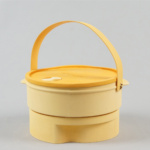CRVNGS
CRVNGS is a website for foodies to track and share their cravings.
As I explored my own habits and behavior patterns, I saw that there was a trend in sharing food cravings amongst my friends. While most often occurring during work hours when we happened to be idle and hungry, these cravings that we report reflect a lot about us and have the ability to tell a fascinating story. I knew that I wasn’t the only one who felt the need to let others know when I craved something: the presence of food on Facebook, Instagram, Twitter, Youtube, etc, is growing by the minute and many post about their cravings or share images that may trigger them. With our world becoming even more digitalized and the time we spend on our devices ever-increasing, I saw an opportunity in creating a digital space where people can be connected through food cravings.
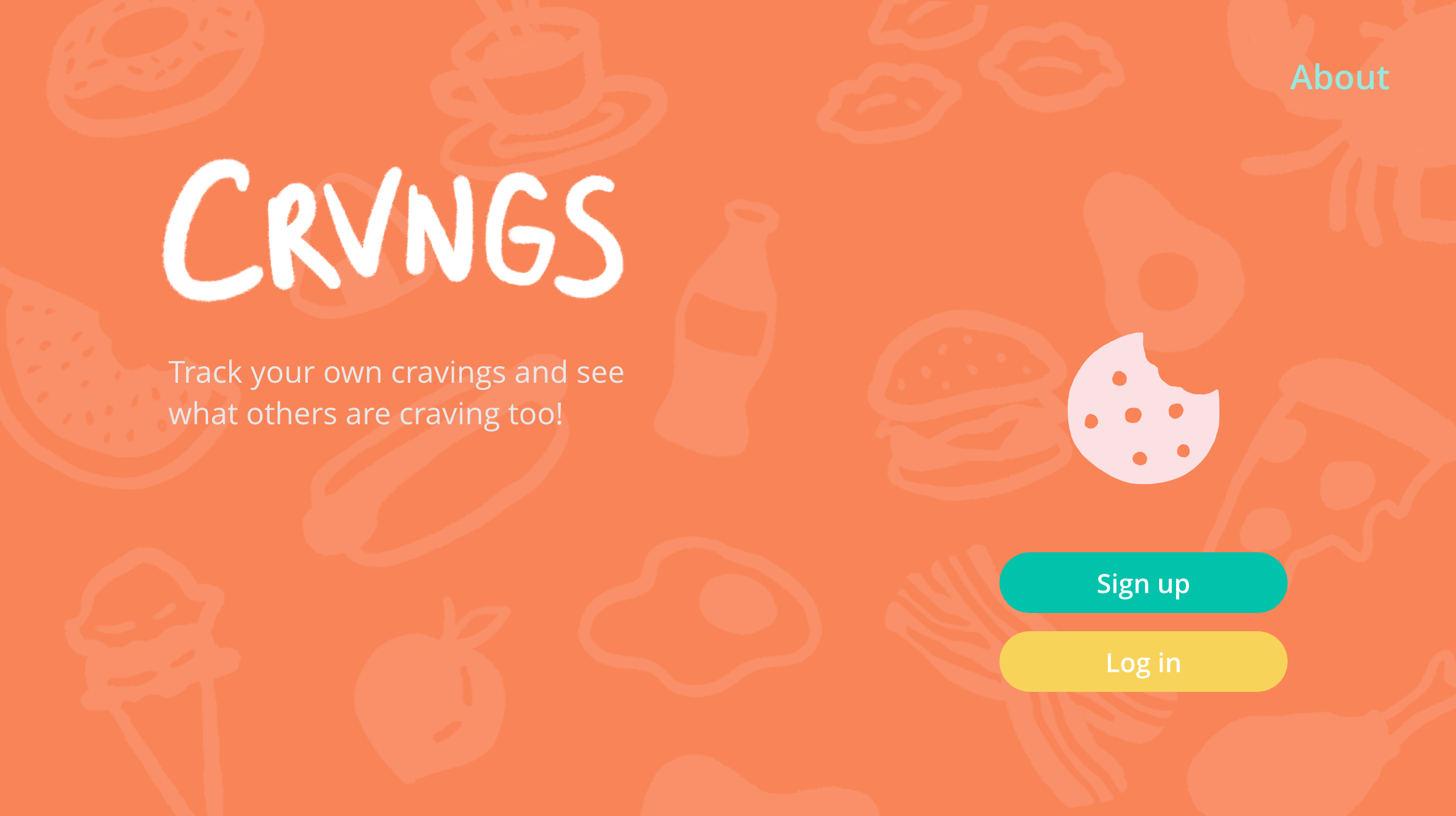
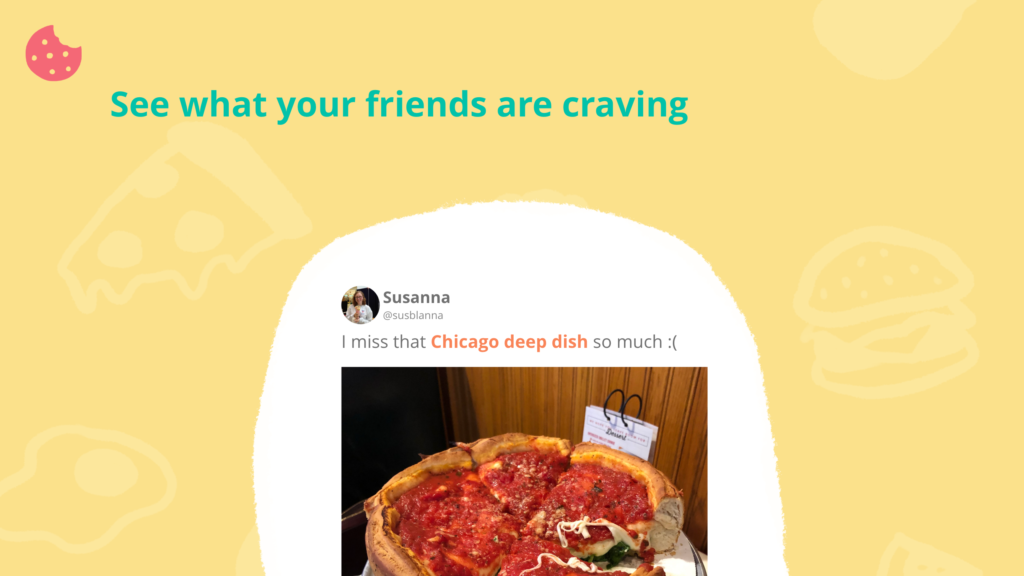
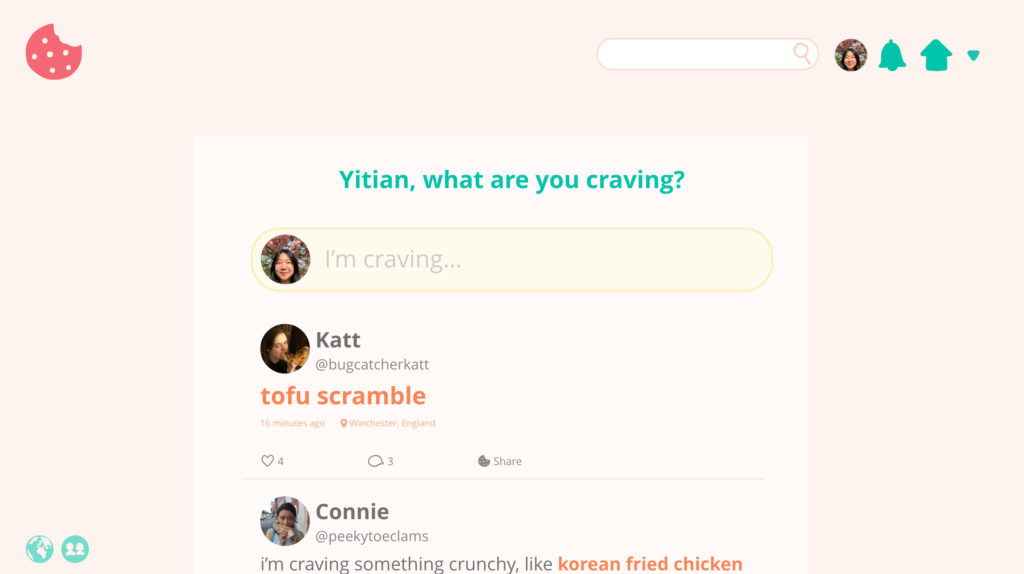
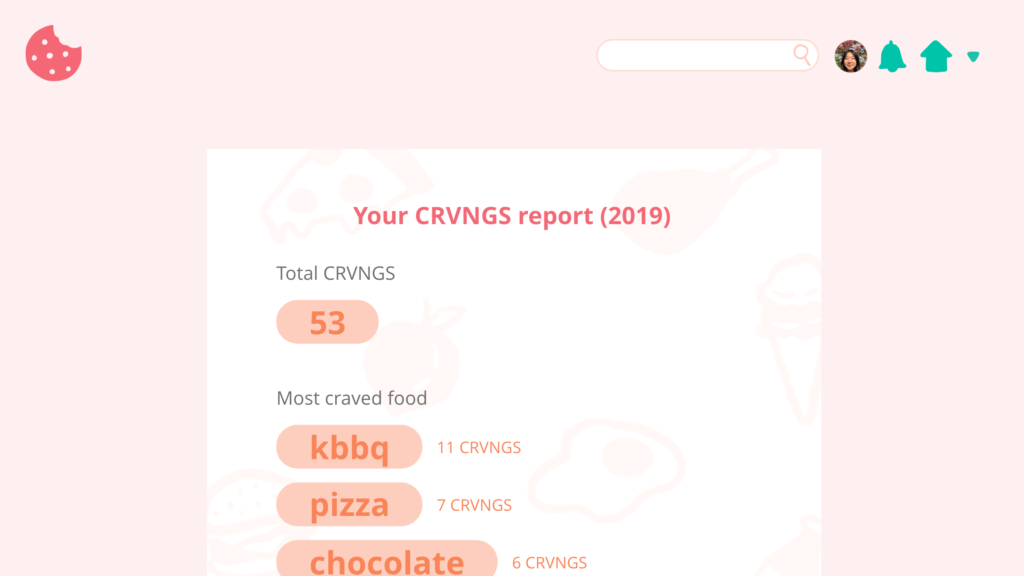
Design objective
Create a web platform that allows users to both share and track their cravings over time.
While cravings may derive from both physical and psychological factors, they are most often learned responses, related to “emotion, memory and reward” (Matteo, 2018). They have to do with cultural associations and personal histories. Although there is a generally negative perception of cravings due to the emotional, impulsive, and over eating that may be triggered from having them, experts propose acknowledging our cravings rather than outright denying them. When we are too restrictive with the way we eat, we may become more deprived: “studies suggest that avoiding certain foods altogether often makes them irresistible” (Mee, 2006). It is important to manage our cravings by being mindful of the role they play in our lives (Cassetty, 2019). By tracking our food cravings, we can understand more about ourselves by discerning what signals the cravings, whether it is physical hunger or emotional causes such as stress or joy. With the information, we can build better habits and reform our reward mindset for eating. My goal in designing the platform is not necessarily to promote better health practices, but rather to gain better awareness of our cravings with the potential to manage them.
Discover
After compiling primary (interviews) and secondary research (data related to food cravings and social media), I created a user profile. My target user is someone who often has cravings, female, between the ages of 17-35, medium or high earner, with a typical 9-5 office job. The user is likely a foodie, enjoys cooking and/or dining out, and keeps up with the food scene. She may be hoping to better manage her cravings through posting and tracking them and also enjoys socializing around the topic of food. She is most often using the platform during work hours, and thus, why I decided to design a website, which can be used on her work computer, vs. a phone app.
Define
I determined the main functions of the site based on my findings.
Develop
First with sketched out wireframes, and then later with a digital prototype built using Adobe XD, I performed user-testing to refine the site.
Deliver
While the project is still a work in progress, my product deliverable is a video walk through (see below) following the narrative of a new user sign up experience.
References
Brown, J. (2019) Why you shouldn’t trust your food cravings. BBC Future. Available at: https://www.bbc.com/future/article/20190524-food-cravings-are-they-a-sign-of-nutritional-deficit. [Accessed 12 October 2019]
Cassetty, S. (2019) Why we have food cravings and what to do about them. NBC News. Available at: https://www.nbcnews.com/better/lifestyle/why-we-have-food-cravings-what-do-about-them-ncna985606. [Accessed 12 October 2019]
Matteo, A. (2018) Food cravings: they’re all in your brain. Learning English. Available at: https://learningenglish.voanews.com/a/health-lifestyle-food-cravings/4184716.html. [Accessed 15 October 2019]
Mee, P. (2006) Sometimes it’s better to acknowledge your cravings. The Irish Times. Available at: https://www.irishtimes.com/news/health/sometimes-it-s-better-to-acknowledge-your-cravings-1.1018587. [Accessed 12 October 2019]
